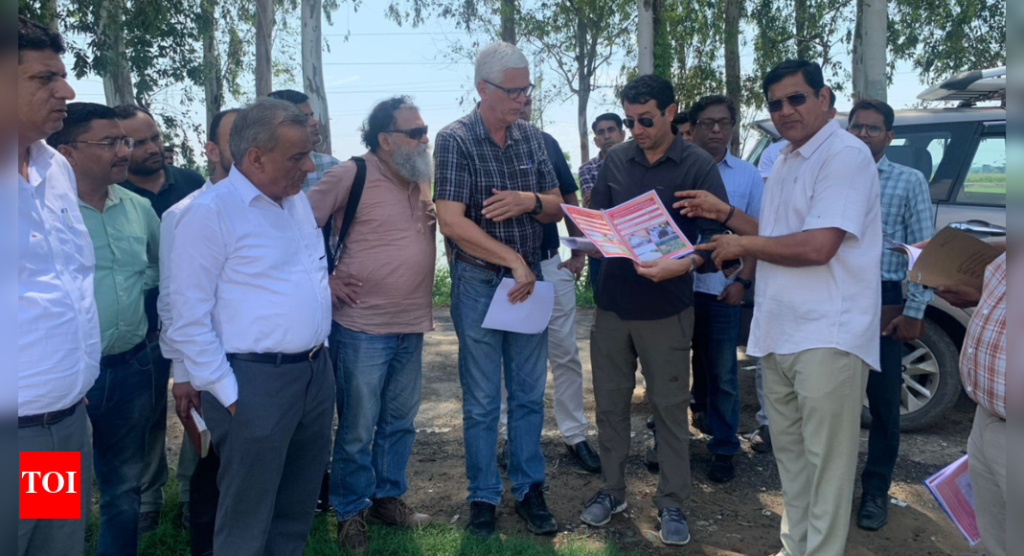
KURUKSHETRA: A high-level team from the World Bank on Wednesday visited the Saraswati River and its recharge systems in Haryana’s Bohli and Isargarh villages in Kurukshetra district. The team included The World Bank’s Joop Stoutjesdijk, Lead Water Resources Management Specialist, and Bogachan Benli (PhD), Senior Irrigation and Drainage Specialist. They were accompanied by officials from the Haryana’s Groundwater Department and irrigation team.During the inspection, the team reviewed the ongoing Saraswati river recharge initiatives and praised the effectiveness of Haryana’s irrigation infrastructure and water management, under the leadership of Chief Minister (CM) Nayab Singh Saini.Deputy Chairman of the Haryana Sarasvati Heritage Development Board (HSHDB), Dhuman Singh Kirmach, shared that eleven recharge reservoirs have been constructed along the Saraswati River. These have contributed significantly to rising groundwater levels in the region. He noted that for the past three years, water has continuously flowed in the river, which has brought immense relief and happiness to local farmers, making the river a “blessing” for the area.Kirmach also explained that the HSHDB, originally established under former CM and now Union minister Manohar Lal Khattar and now actively supported by CM Nayab Saini, is working towards ensuring a year-round flow of water in the river. Currently, water flows for about six to seven months annually. To achieve continuous flow, the HSHDB is constructing a dam and barrage at Adi Badri and planning a reservoir over 350 acres. Kirmach expressed confidence that the vision of year-round flow in Saraswati is not far from realization.He emphasized the cultural and civilizational significance of the Saraswati River, linking it to the origins of the ancient Saraswati-Indus Valley Civilization. “This river is not just water; it is a part of our heritage,” he said.Dhuman Singh claimed, “The identified course of the Saraswati River spans from the Bandarpunch glacier in Uttarakhand, through Himachal Pradesh, Haryana, Rajasthan, and reaches the Rann of Kutch in Gujarat. In Haryana, approximately 400 kilometers of the river course — from Bilaspur to the Ottu Headworks in Sirsa — now has flowing water. The river system integrates water from multiple local sources, including the Chautang, Linda, Tangri, Markanda, and Ghaggar rivers.”World Bank officials commended the recharge systems established along the Saraswati River and lauded the state government’s commitment to sustainable river rejuvenation.Senior hydrologist Virender Lamba, executive engineer Ajit Singh, and Navtej Singh were also present during the visit.








